
Recognizing Plant Cell first authors: Steven Burgess
The Plant Cell, The Plant Cell: Author ProfilesSteven Burgess, co-first author of Genome-wide transcription factor binding in leaves from C3 and C4 grasses
Current Position: Carl R. Woese Institute for Genomic Biology Postdoctoral Research Fellow, University of Illinois at Urbana-Champaign, USA
Education: 2011 PhD Imperial College London, UK,…
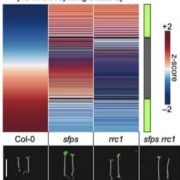
In the Pale Red Light: Control of pre-mRNA Splicing by RRC1 and SFPS
Research, The Plant Cell, The Plant Cell: In BriefPlants have armed themselves with a battalion of photoreceptors to cope with changes in light quantity, quality and direction. Light perception is especially critical when the seedling first emerges from the darkness of the soil and engages the red/far-red light photoreceptors phytochromes (phys). An…
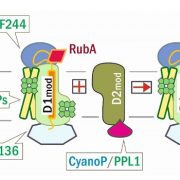
Rubredoxin A Functions in Early Photosystem II Biogenesis
Research, The Plant Cell, The Plant Cell: In a NutshellKiss et al. report that a rubredoxin-like protein conserved in oxygenic phototrophs binds to the D1 protein and facilitates the formation of the D1/D2 heterodimeric reaction center complex of photosystem II. Plant Cell https://doi.org/10.1105/tpc.19.00155
Background: Photosynthesis is the vital process…

Recognizing Plant Cell first authors: Kevin Cope
The Plant Cell, The Plant Cell: Author ProfilesKevin Cope, first author of The Ectomycorrhizal Fungus Laccaria bicolor Produces Lipochitooligosaccharides and Uses the Common Symbiosis Pathway to Colonize Populus Roots
Current Position: Post-Doctoral Research Associate
Education: Ph.D. in Cellular & Molecular Biology
Non-scientific Interests:…

Balancing growth and defense in the shade
Research, The Plant Cell, The Plant Cell: In a NutshellLiu et al. examine how plants allocate resources between growth and defense in unfavorable conditions.
Plant Cell https://doi.org/10.1105/tpc.18.00991
By Yang Liua and Haiyang Wangb
aBiotechnology Research Institute, Chinese Academy of Agricultural Sciences, Beijing 100081, China
bSchool…
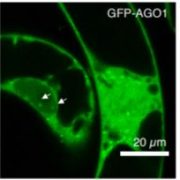
Small RNAs in the maillot jaune: transcriptional analysis of the plant cell cycle
Research, The Plant Cell, The Plant Cell: In BriefThe cell cycle is a tightly coordinated dance with the ultimate goal of dividing one cell into two. Eukaryotic cells tend to divide in the same general pattern, broadly reduced to four phases; cells increase organelle content in the G1 phase, DNA replication occurs in S phase, cells grow in size and…
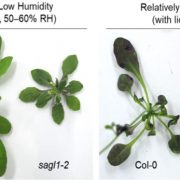
SAGL1-CER3 Function in Cuticular Wax Biosynthesis in Response to Humidity
Research, The Plant Cell, The Plant Cell: In a NutshellKim et al. reveal how the SAGL1-CER3 module regulates cuticular wax biosynthesis in response to ambient humidity. Plant Cell https://doi.org/10.1105/tpc.19.00152
By Hyojin Kim and Mi Chung Suh, Department of Life Science, Sogang University, Republic of Korea
Background: The hydrophobic cuticle…
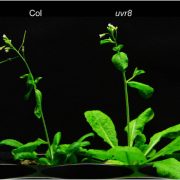
UV-B attracts inflorescence stems
Research, The Plant Cell, The Plant Cell: In a NutshellVanhaelewyn et al. examine phototropism in adult plants. Plant Cell https://doi.org/10.1105/tpc.18.00929
By Lucas Vanhaelewyn1, András Viczián2, Filip Vandenbussche1
Laboratory of Functional Plant Biology, Department of Biology, Faculty of Sciences, Ghent University, KL Ledeganckstraat 35,…

An Unexpected Role of a Phosphatase-like Protein in Starch Degradation
Research, The Plant Cell, The Plant Cell: In a NutshellSchreier et al. uncover the surprising role played by the glucan phosphatase family member, LIKE SEX4 1, as a protein scaffold on the starch granule surface that binds β-amylases. Plant Cell https://doi.org/10.1105/tpc.19.00089.
By Tina B. Schreier1,2 and Samuel C. Zeeman1
1 Institute of Molecular…

